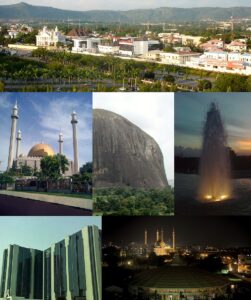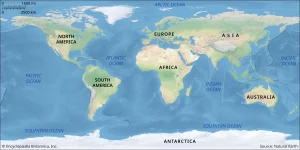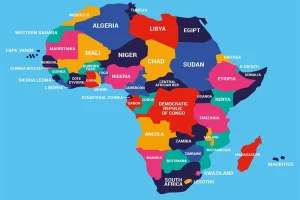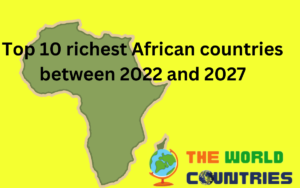African Charm: Ranking the Top 10 African Countries with Beautiful Ladies in 2024
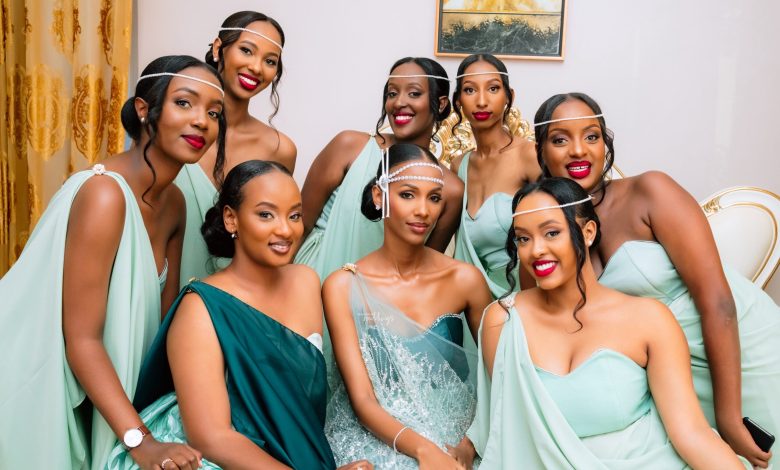
Today’s fascination with African beauty reflects an intricate mix of cultures, histories, and ideals, challenging both Western standards and traditional African values. As we explore African countries with beautiful ladies in 2024, it’s essential to acknowledge that beauty standards are evolving, and influenced by global trends and native traditions alike. The beauty industry in Africa is booming, expected to reach $1.11 billion, showcasing a wide array of beauty ideals from Nigeria to South Africa, from Ethiopia to Kenya, each country offering its unique perspective on what it means to be beautiful. This rich diversity challenges the notion of a singular standard of feminine beauty across the continent, celebrating instead the wide array of features, skin tones, and body types that represent the true beauty of African women.
As we rank the top 10 African countries with beautiful ladies, our journey takes us through lands rich in culture, fashion sense, and heritage. From the striking beauty of Nigerian women to the elegant fashion sense of those in Ghana, from the diverse beauty in Kenya to the traditional allure of ladies in Tanzania, this article uncovers the unique aspects of beauty and attractiveness that define each nation. Recognizing that African beauty cannot be boxed into a singular standard, we celebrate the distinctive traits that make women across these countries stand out, challenging the Eurocentric beauty standards established during colonialism and embracing a broader spectrum of beauty that includes all forms of natural hairstyles, fuller figures, and proud displays of heritage.
Ethiopia
Ethiopian women embody a breathtaking mosaic of beauty, shaped by a rich tapestry of genetic and cultural influences. Their diverse physical characteristics and facial structures draw from a broad palette, including Near Eastern, East African, Middle Eastern, South American, Cushitic, Indian or South Asian, Nilo-Saharan, Bantu, and Southeast Asian backgrounds. This diversity is mirrored in their stunning appearances, characterized by:
- Lean bodies and high, wide foreheads
- Pronounced cheekbones and almond-shaped eyes
- Creamy, chocolate-milk-colored skin
Their beauty is not just skin deep; Ethiopian women often style their hair straight back, showcasing their striking faces and emphasizing a beauty that transcends physical attributes. This beauty is deeply rooted in their cultural heritage, reflecting a blend of strength and fearlessness that is as captivating as their physical appearance.
Ethiopian men, too, share in this allure, known for their casual fashion sensibility, striking handsomeness, and tall, lean bodies. Their hair, often dreadlocked into three-inch coils, adds to their distinctive look. Ethiopia’s diverse ethnic groups contribute to a wide array of physical characteristics and hair types, illustrating the country’s rich genetic mosaic. The so-called ‘Ethiopic’ look, characterized by elongated features, is not unique to Ethiopia alone but can be found across various African countries and ethnic groups, highlighting a shared history of common ancestors.
However, the concept of Ethiopian beauty also carries a complex narrative, used at times as a vehicle for nationalism. This has promoted an idea of Ethiopianness that, unfortunately, excludes certain ethnic groups and histories. On platforms like Instagram, pages dedicated to Ethiopian or “Habesha” beauty often feature women fitting a narrow definition of beauty – light skin, long hair, and narrow noses. This reinforces a limited idea of Ethiopian beauty, excluding those who don’t fit this popular definition from the imagination of Ethiopianness. Despite these challenges, Ethiopian women are celebrated as among the most beautiful in Africa, their elegance and grace deeply rooted in a rich cultural heritage that continues to enchant and inspire.
Nigeria
Nigerian women stand at the forefront of beauty and style, celebrated for their confidence and fashion-forward sensibilities. Their allure is not just confined within the borders of Nigeria but recognized across various African countries known for their exceptionally beautiful women, including Togo, The Gambia, Cameroon, and many more. The beauty industry in Nigeria, significantly bolstered by brands like House of Tara, caters specifically to the African consumer. These brands are lauded for:
- Supporting black skin tones with tailor-made products
- Protecting the hot African climate
- Embracing the evolving Nigerian beauty standards which now celebrate fuller, voluptuous bodies over slim figures, with terms like ‘thick’, ‘bunda’, and ‘yansh’ becoming descriptors of desirable body shapes
However, the journey towards embracing these evolving standards has not been without its challenges. The societal pressure to conform to certain body shapes has led many women towards unhealthy practices, including surgery, to achieve their desired physique. This has sparked a crucial conversation about self-acceptance and the importance of not tying one’s self-worth to body image. Nigerian women, embodying a spectrum of shapes, sizes, and skin tones, reflect the country’s diverse ethnic tapestry. Icons like Agbani Darego and Omotola Jalade Ekeinde, who have achieved international recognition, underscore the subjective and varied nature of beauty within Nigeria.
The narrative around beauty in Nigeria is also shaped by societal trends and expectations, often leading to body-shaming and insecurities among women. The popularity of skin-lightening products, despite their harmful effects, highlights the preference for lighter skin tones. This underscores the need for a broader conversation about beauty standards and their impact on women’s health. The beauty and wellness industry in Nigeria, featuring successful entrepreneurs like Atilola Moronfolu and Chioma Ikokwu, is a testament to the resilience and innovation of Nigerian women. These professionals are not just business owners; they are pioneers advocating for a more inclusive and diverse representation of beauty, emphasizing the importance of self-acceptance and challenging societal standards.
Tanzania
Tanzanian women are celebrated for their radiant natural beauty, which is complemented by their sun-kissed skin, enchanting smiles, and gracefully curvy figures. Beyond their physical attributes, these women are revered for their commendable manners and the warmth and affection they extend towards their spouses, making them stand out in the realm of African charm. The beauty industry in Tanzania serves as a vibrant platform for women to express their creativity and challenge conventional beauty standards. This sector thrives on inclusivity, celebrating a wide spectrum of beauty through:
- Designing distinctive hairstyles
- Crafting natural beauty products
- Experimenting with the latest makeup trends
Moreover, Tanzanian women in beauty entrepreneurship significantly contribute to the community by:
- Establishing beauty-related ventures
- Generating employment opportunities
- Launching community initiatives
- Offering mentorship programs
These endeavours not only bolster the local economy but also pave the way for Tanzanian women to access global markets, thereby enhancing the country’s representation in the international beauty industry. Tanzanian women’s approach to beauty is deeply rooted in embracing their natural allure and traditional attire. The ‘khanga,’ a vibrant garment adorned with intricate patterns, is a staple in their wardrobe, symbolizing the rich cultural heritage of Tanzania. Unlike the prevalent trend in many societies, Tanzanian women generally eschew makeup, opting instead to embellish themselves with handcrafted jewellery that marks various life stages. This minimalist approach to beauty, coupled with the community’s diverse beauty standards across different ethnic groups, underscores a broader narrative:
- The ‘Pares’ community equates beauty with size, favouring fuller figures.
- The Maasais value height and darker skin tones as the epitome of beauty.
- Hunters and gatherers prefer lighter-skinned and more petite women.
- Being curvaceous and voluptuous is widely regarded as beautiful, with a woman’s ability to bear children often linked to broader hips and a round body, signifying desirability and suitability for marriage.
This nuanced perspective on beauty, which diverges from the high standards observed in countries like Canada, celebrates weight and even baldness among women, particularly teachers, as normal and accepted. Tanzanian women, with their natural beauty, good manners, and nurturing nature, truly embody the essence of African charm, challenging and redefining beauty standards on their terms.
Kenya
Kenyan women are celebrated for their striking beauty, significant educational achievements, and a strong entrepreneurial spirit that sets them apart on the African continent. Their love for fashion is evident in the way they dress for various occasions, showcasing a vibrant and dynamic style that often incorporates traditional elements with modern trends. The fashion industry in Kenya is on the rise, with local designers gaining international recognition for their innovative designs and contributions to the global fashion scene. Notable designers include:
- Patricia Mbela of Poisa
- Ann McCreath of KikoRomeo
- Sally Karago of Mcensal Fashion House and SK Collection
These designers have not only put Kenya on the global fashion map but also inspired a new generation of fashion enthusiasts and creators within the country.
The beauty sector in Kenya is thriving, with the makeup industry experiencing significant growth. Kenya ranks third in sub-Saharan Africa for personal care and cosmetic product usage, a testament to the burgeoning demand for beauty products that cater to the diverse needs of Kenyan women. Pauline Cosmetics, founded by Nelly Tuikong in 2013, stands out as a leading Kenyan brand dedicated to darker skin tones, reflecting the country’s commitment to inclusivity and diversity in beauty. Kenyan women’s hairstyles are as diverse and vibrant as their fashion sense, embracing colourful braids, faux locs, Havana twists, and natural afros, celebrating their heritage and individuality.
Lupita Nyong’o, a Kenyan-Mexican actress, embodies the essence of Kenyan beauty and serves as a role model for young women in Kenya and beyond. Celebrated for her natural hair and promotion of natural beauty, Lupita encourages others to find beauty in their actions and souls, embracing their dark skin with pride. Her influence extends beyond the screen, inspiring a movement towards self-acceptance and the celebration of one’s unique beauty. The Kenyan market’s interest in herbal and health products further highlights the country’s holistic approach to beauty, emphasizing the importance of natural and health-focused beauty solutions.
Democratic Republic of the Congo
In the Democratic Republic of the Congo (DRC), the beauty of its women is intertwined with the country’s efforts to enhance healthcare and cultural expression. The Access to Primary Health Care Project (ASSP), funded by UK Aid, is a testament to these efforts, focusing on improving the health care system across five provinces. Key impacts of the ASSP include:
- Healthcare Accessibility and Affordability:
- Consultation fees in Katende Health Zone were significantly reduced from 8,500 CDF to 1,250 CDF.
- Surgeries and deliveries saw dramatic price drops, making essential medical procedures more accessible to women.
- Enhanced Maternal and Child Health:
- Over 88,779 new users registered for modern family planning methods in the first year in Katende Health Zone alone.
- A skilled healthcare professional attended 213,716 births, hitting 98% of the project’s target.
- Disease Management and Prevention:
- In the Ilebo Health Zone, outbreaks of typhoid and malaria were effectively managed with provided medicines and equipment.
- A staggering 232,781 one-year-old children were vaccinated against measles, showcasing a robust effort in disease prevention.
Cultural initiatives also play a crucial role in shaping the perception of beauty in the DRC. Gracia Mutombo’s project, ‘Colonised Beauty’, aims to empower young Black girls by educating them on the impact of social media and Westernized beauty ideals. This initiative encourages them to embrace their uniqueness and the glory of their blackness. Additionally, the ‘Beauté Congo 1926-2015 Congo Kitoko’ exhibition in Paris offered a broader perspective on Congolese beauty, featuring works by renowned artists like Chéri Samba and Chéri Chérin. Their vibrant depictions of daily life and societal events in the DRC challenge conventional beauty standards and celebrate the diversity of African beauty.
The DRC’s rich potential for tourism, highlighted by its unrivalled wildlife and UNESCO World Heritage Sites like Virunga National Park, further underscores the country’s unique appeal. This blend of healthcare improvements, cultural initiatives, and natural beauty contributes to the recognition of the DRC as a home to some of the most beautiful women in Africa, celebrated not only for their physical attributes but also for their resilience, creativity, and strength.
Ivory Coast
In the Ivory Coast, the celebration of beauty takes a unique form through the Miss Awoulaba beauty pageant, initiated in the early 1980s. Unlike typical Western beauty contests, Miss Awoulaba places a special emphasis on:
- Physical harmony and natural charm
- A preference for women with curvier bodies
- Contestants showcasing thick, black hair, traditional hairstyles, and clothing
The pageant has seen a variety of winners over the years, including notable names such as Diaye Judith (2001) and Aboya Koua Constance (2023), with prizes ranging from cash to a Citroën C4 vehicle, underscoring the event’s significance in promoting a distinct beauty ideal.
The beauty industry in Ivory Coast caters to the local preference for fuller figures, offering products aimed at enhancing certain physical features. This includes:
- Creams and pills designed to enlarge buttocks
- Services for butt augmentation surgeries
- Padding for clothing to give the appearance of larger buttocks
However, this beauty ideal is not without its drawbacks, as it has been linked to various health risks among West African women, such as being overweight, obesity, diabetes, and high blood pressure. The use of certain beauty products has also raised concerns about potential carcinogenic effects.
Despite these challenges, the beauty and personal care market in Ivory Coast is thriving, with a projected annual growth rate of 4.90% from 2024 to 2028. The market’s dynamics reveal:
- A 2024 revenue of US$1.85bn, with personal care as the largest segment
- An increasing demand for natural and organic products
- An estimated 1.9% of total revenue from online sales in 2024
This growth reflects a broader trend across Africa, where countries like Ivory Coast are recognized for their exceptional beauty standards and contributions to the global beauty industry.
Ghana
Ghanaian women are renowned for their friendliness, captivating smiles, and romantic appeal, contributing significantly to Africa’s rich tapestry of beauty. Their allure is recognized not only within the borders of Ghana but across a continent known for its exceptionally beautiful women, with Ghana proudly standing alongside countries such as Nigeria, South Africa, and Kenya. This recognition is a testament to the diverse and vibrant cultures that shape the continent’s perception of beauty.
The beauty and fashion scene in Ghana is bustling, with various products and services catering to women’s needs:
- Fashion and Accessories:
- Cruise socks (5 pairs) – £2.50
- Briefs (full, short, mini) – Varying prices
- Bra layer set – £8
- Shapewear thongs (medium) – £6
- Sunglasses (4 pairs) – £2.50 to £4.50 each
- Toiletry bag – £8
- Earrings (various styles) – £1.50 to £3.50 each
- Bangles (pack of 10) – £3
- Necklace set – Price not mentioned
- Beauty and Personal Care:
- Argan Oil shampoo and conditioner – Prices not mentioned
- Mouthwash (2 bottles) – Prices not mentioned
- Hair extensions (4 packs) – $33.99 each
- Hair sponge, Hair mousse, Dental hygiene treatment – Prices not mentioned
- Nail infills and eyebrow/upper lip threading, Eyelash appointment – Prices not mentioned
The Evita Joseph beauty brand, founded in 2015, has become a beacon for women of colour, especially in Ghana. With a focus on research, design, and production tailored to this demographic, Evita Joseph has introduced high-performing products such as expert brow liner, lip gloss, and makeup brushes. The brand’s success is reflected in a 30% growth in revenue in 2023 compared to the previous year, highlighting the increasing demand for beauty products that cater specifically to the needs and preferences of African women. This growth underscores the dynamic and evolving beauty landscape in Ghana, where traditional beauty standards are celebrated alongside modern trends and innovations.
South Africa
South African beauty ideals are as diverse as its multicultural population, drawing from a rich tapestry of cultural, historical, and societal influences. The country’s approach to beauty is characterized by:
- Diversity in Beauty Standards:
- Embraces a wide range of physical features, skin tones, and body types.
- A dynamic beauty standard that encompasses a variety of representations.
- Natural Beauty and Inclusivity:
- A growing movement towards celebrating natural beauty.
- Less reliance on makeup, preferring a healthily curvy physique.
- Plastic surgery is much less common compared to American culture.
- Media and Fashion Industry Trends:
- Push for African magazines to showcase the diversity of African beauty rather than adhering to Eurocentric norms.
- Akinro and Mbunyuza-Memani’s study highlights the prevalence of fixed or locally acquired hair resembling white women’s hair on magazine covers.
The issue of skin lightening in South Africa has escalated post-1994, reflecting deeper societal and racial influences. This trend, known as ‘colourism’, affects all racial groupings and is compounded by:
- Harmful Ingredients in Skin Lightening Products:
- Commonly contains mercury, hydroquinone, topical steroids, and resorcinol.
- South Africa’s strict policy against advertising products to bleach, whiten, or lighten the skin.
- Market Challenges:
- The flood of unregulated products from other countries.
- Lower-income women are more vulnerable to using unsafe products.
Research Psychologist Meagan Jacobs suggests reclassifying skin-lightening products from cosmetics to pharmaceuticals to provide greater control and empower consumers. This shift could help address issues with product labelling and provide more information to consumers, potentially mitigating the risks associated with these products.
South African women, admired for their beauty, intelligence, ambition, and determination, reflect the country’s rich diversity. With the cosmetics and personal care products market expected to grow significantly, South Africa continues to be a key player in the global beauty industry, balancing traditional beauty ideals with modern influences and challenges.
Zimbabwe
Zimbabwe, along with Senegal, Burundi, Zambia, Gabon, and Mozambique, ranks among the top 15 African countries in 2024 where women can thrive to their fullest potential without facing stereotypes. This environment fosters a culture where beauty standards are not just accepted but celebrated for their diversity and cultural significance.
Ideal Body Features in Zimbabwe
- Pear-Shaped Silhouette: Research reveals that the ideal body features for Zimbabwean women include large, nicely curved hips, a narrow waist, and a well-shaped bust area. This pear-shaped silhouette is highly esteemed and is often encouraged from a young age through traditional medicinal consumption and physiological interventions.
- Cultural Norms and Values: Understanding the cultural norms and values that shape these beauty standards is crucial. From birth to six years, girls are gently moulded to fit these ideals, highlighting the deep-rooted cultural practices in shaping perceptions of beauty.
Evolving Beauty Standards
- Demographic Preferences: Zimbabwean beauty standards are evolving, with preferences split between Afrocentric and Eurocentric traits. Mature, less educated, and indigenous religious males tend to prefer Afrocentric traits, while young, educated, exotic religious females lean towards Eurocentric traits.
- Advertising Industry: A study comparing the idealization of Afrocentric and Eurocentric body types in Zimbabwean advertisements shows a strong bias towards physical attractiveness. This is reflected in the selection of models, indicating a shift towards a more cosmopolitan society.
The Impact of Global Beauty Standards
- Western and KPOP Influences: The rise of beauty standards like the Western Kardashian ideal and the Korean Pop (KPOP) beauty standard introduces preferences for small waists, round buttocks, fair skin, and slim bodies. These ideals have led to young women adopting harmful diets and undergoing surgeries to achieve such looks.
- Voices from Zimbabwe: Hollywood-based Zimbabwean celebrity makeup artist Jackie Mgido and award-winning model Ayanda Candice Sibanda have spoken out against the pressure to conform to these standards. They emphasize the damaging effects of having beauty defined by mainstream standards and advocate for the definition of beauty in African terms.
In Zimbabwe, the conversation around beauty is complex and multifaceted, reflecting a society in transition. While traditional beauty ideals remain strong, the influence of global trends poses new challenges and opportunities for defining beauty in a uniquely Zimbabwean context.
Burundi and Rwanda
Burundi women are known for their resilience and hardworking nature, often working from dawn to dusk without complaint. Their tall, graceful stature, full bodies, and disarming smiles are characteristic traits that contribute to their unique charm. Despite numerous challenges, including the climate crisis which has disproportionately affected them through food and water insecurity, early marriage, and lack of education, Burundi women have shown remarkable capacity to love and maintain peaceful marriages by respecting and obeying their men.
The political and social landscape in Burundi presents both challenges and opportunities for women:
- Political Rights and Civil Liberties: Burundi’s political rights score is 14 out of 40, indicating limited political pluralism and participation. The main opposition party, the National Congress for Liberty (CNL), faced suspension in June 2023, and freedom of expression is severely restricted. NGOs encounter restrictive laws, and the security situation remains poor with widespread human rights violations.
- Economic and Educational Access: Women in Africa, including Burundi, are at the forefront of building solutions to make their communities safer and stronger. However, policies and funding are critically needed to expand women’s access to education, clean energy, and green tech sectors, alongside political representation. The economy’s heavy reliance on agriculture highlights the importance of supporting women in this sector for overall economic growth.
Burundi’s efforts towards gender equality and representation in political institutions have been notable. Since 2005, quotas for ethnic groups and women in parliament, central government, and municipal administrations have been set. A recent evaluation of these quotas has begun, with findings suggesting that while women’s political representation has increased, they are often confined to “feminine”, caregiving ministerial portfolios, such as health and education. This highlights the ongoing struggle for equal representation and the need to address gender stereotypes in political roles.
In conclusion, the beauty and strength of Burundi women lie not only in their physical attributes but also in their enduring spirit and contributions to their communities. Despite facing significant challenges, they continue to strive for a better future, embodying resilience and grace.
Conclusion
The exploration of beauty across the ten diverse African countries has offered us a rich tapestry of perspectives, showcasing how beauty is deeply intertwined with culture, heritage, and societal norms. From the striking elegance of Ethiopian women to the radiant natural allure of Tanzanian ladies, and the dynamic fashion scene in Kenya, each country presents a unique narrative that challenges traditional and Western standards of beauty. These stories not only highlight the evolving beauty ideals within each nation but also emphasize the broader significance of celebrating diversity and inclusivity in defining beauty.
As we reflect on the varied definitions and representations of beauty across these countries, it becomes clear that African beauty cannot and should not be boxed into a singular standard. The significance of this exploration extends beyond mere aesthetics, touching upon issues of self-acceptance, the impact of societal and global trends on individual and collective self-esteem, and the importance of preserving cultural heritage while embracing modernity. In doing so, this journey through Africa’s diverse beauty landscapes encourages further research and dialogue, inviting readers to appreciate the depth and breadth of beauty that thrives across the continent.
FAQs
Which African country is renowned for having the most beautiful women in 2024?
Ethiopia holds the title of the country with the most beautiful women in Africa as of 2024. Ethiopian women are known for their captivating charm, chocolate skin, exquisite facial features, and lustrous hair. They have gained international recognition, with many becoming well-known figures across the globe.
Globally, which country is celebrated for its beautiful women?
Argentina is celebrated worldwide for its beautiful women, who embody the enchanting Latin race and are always impeccably dressed. Argentinean women, primarily of European descent, are admired for their stunning figures, dedication to appearance, and angelic personalities.
Among tribes, which is known for having the most beautiful women?
The Ebira tribe, mainly found in Kogi state and other parts of Nigeria, is distinguished for the beauty and loyalty of its women. They are known for their curvaceous bodies and unique facial features. Similarly, the Idoma people of Benue are also celebrated for their beautiful women.
Which continent is home to the most beautiful women?
Africa stands out as a unique continent for many reasons, including being the hottest in terms of temperature. It is also acclaimed for having the most beautiful women in the world, showcasing a diverse array of stunning beauty across its countries.
